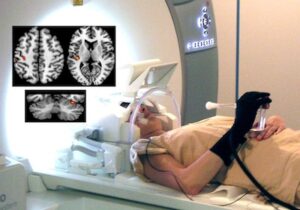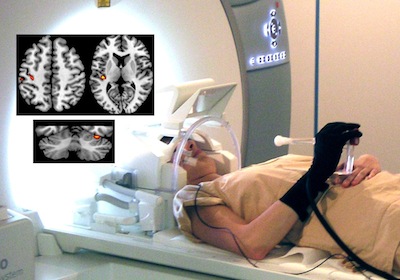We know that repetitive training changes functional circuits and even the structure of the brain. These structural changes are especially prominent in people who train for many years several hours a day, for example musicians who are highly motivated to play their instrument and often have extensive training periods.
It has been demonstrated that these structural increases are seen in both white matter wires such as the broader corpus callosum connecting both hemispheres, and also in grey mater structures such as an increased hand knob of the non-dominant hemisphere and in an increase of the auditory cortex.
In contrast to patients who experience long-term periods of pain and immobilize their upper extremity, musicians show increased representational areas for somatosensory stimulation of the fingers and are able to recruit single finger movements extremely precisely – probably due to a high inhibition of neighboring representation fields. However, not only the somatosensory and the motor system are both temporally paired during movement performance but also the auditory input is associated with motor response. Hebbian mechanisms are therefore also important for intermodal associations, this includes coactivation of the auditory cortex even when performing on a keyboard, if the sound is off.

In a recent study (Gebel et al., 20113) we demonstrated, that not only the time of training and the continuous audio-motor association of instrumental play but also the instrument is essential for specific associative coactivations. When a pianist plays on the valves of a MR-compatible trumpet without using their lips, they do not show any coactivations in the auditory cortex in functional imaging. In contrast, a trumpet player not only shows associated auditory activations but also automatically recruits motor patterns of their lips in the cerebellum and their primary motor cortex representation of the inspiration muscles. When controlling the lip muscles with EMG, these muscle keeps perfectly calm; only brain circuits are automatically associated but not the movement execution.
This finding has an impact on our knowledge of the neural mechanisms of dystonia, a pathology which also occurs in musicians but only when positioning with their specific instrument but not when doing the same movements in another context. Furthermore, it might help to understand findings on maladaptive plasticity in chronic pain patients.
About Martin Lotze
Martin is a neurologist working in Greifswald/Germany on adaptive and maladaptive plasticity using functional imaging and transcranial magnetic stimulation. He is also one of our collaborators on BiM.
is a neurologist working in Greifswald/Germany on adaptive and maladaptive plasticity using functional imaging and transcranial magnetic stimulation. He is also one of our collaborators on BiM.
Reference
Gebel B, Braun Ch, Kaza E, Altenmüller E, & Lotze M (2013). Instrument specific brain activation in sensorimotor and auditory representation in musicians. NeuroImage, 74, 37-44 PMID: 23454048



